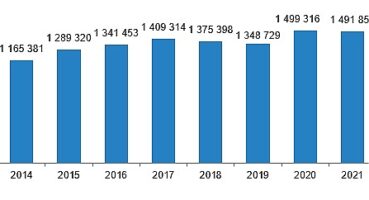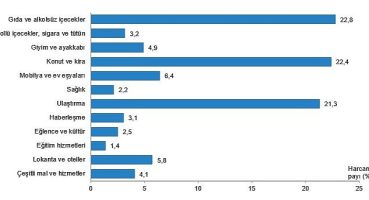If we look at the highlights of the Fed’s last meeting of the year;
The Committee aims to achieve 2% maximum employment and inflation in the long term. To support these goals, the Committee decided to increase the target range for the federal funds rate from 4-1/4 percent to 4-1/2 percent.
While determining the pace of further increases in the target range, the Committee will take into account the cumulative tightening in monetary policy, delays in monetary policy’s impact on economic activity and inflation, and economic and financial developments.
In addition, the Committee will continue to reduce its holdings in Treasury securities and corporate debt and corporate mortgage-backed securities, as disclosed in its Plans to Resize the Federal Reserve Balance Sheet, published in May.
The Fed increased its terminal rate expectation from 4.6% to 5.1%, showing that rate hikes will continue for a while and it is not yet fully confident in the decline in inflation. Considering that the Fed will tighten another 75 basis points in total, it is likely to go 50-25 in two meetings and then take a break. However, it is more important to keep the interest rates at the maximum level, rather than stopping the rate hikes. The fact that the rate cuts are most likely to be postponed until 2024 shows that the conditions have not yet been formed for the transition to the relaxation phase.
Of course, the concern of stagflation complicates the work of central banks, and since inflation is not the only variable, the recession comes to announcing the beneficial and toxic effects of policy tightening together. The ECB’s interest rate perspective and statements show that this is something to be worried about. Namely; The structure of the problems faced by the EU economy, especially the energy crisis, is very different from that of the US. The increasing risk perception and the Central Bank, which has increased interest on the one hand, cause an increase in the debt burden, and the main indicator that we will basically monitor in this area is the Italian-German interest spread. Increasing interest rates are of course negative for the Italian government, which has a 160% debt burden. Further increase in borrowing costs and spread widening is very likely. It seems that the ECB will also need to use the TPI tool designed to help countries such as Italy-Spain in order to control these yield spreads.
After the BOJ decisions, the movements in the yen and JGB markets are followed. The BOJ’s change in yield control may not be perceived as a policy change at the moment, but the market was already not welcoming to the 0.25% yield ceiling in previous moves.
If we look at Turkish assets; While transaction volumes weakened in global markets due to the year-end effect, the lira depreciated against the dollar. USD/TRY is up 0.1% to hover above the 18.70 level. While the lira’s loss against the dollar is approaching 29% this year, it has been depreciating against the dollar for 10 consecutive years. The 5-year CDS is trading near flat at 521 basis points.
The CBRT held the MPC meeting and decided to stay on hold in line with the Bank’s direction that it ended the rate cut cycle that started in August. The Bank noted that due to the increasing recession risks in financial markets, it has started to regulate its expectations that central banks will end their rate hike cycles in the near future. Otherwise, it is stated that the entire policy toolkit of the Central Bank, especially the funding channels, will be aligned with the liraization targets. The CBRT’s decisions that clearly prioritize growth over inflation have little effect on general macroeconomic variables at this point. Now that the single rate target has been reached, the Bank will continue to keep TL under tightly managed volatility, while remaining at deeply negative real interest rates both in the past and before the elections; however, the aftermath is very uncertain. Meanwhile, while banks try to increase the attractiveness of TL deposits in order to meet their dedollarization targets, TL deposit costs will rise, while bond rates and commercial loan rates will remain very low.
According to BloombergHT’s news, citing Deputy Minister Murat Zaman, the Turkish Ministry of Treasury and Finance will launch its first green Eurobonds in January.
Reuters reported that, in line with previous reports, Qatar is expected to purchase Turkish Eurobonds worth US$ 2 billion to be issued in January 2023. Previously, Turkey and Qatar are in the final phase of negotiations for Qatar to provide up to US$ 10 billion (minimum US$ 8 billion) to Turkey, with US$ 2-3 billion to be received in Eurobonds by the end of 2022.

Kaynak Tera Yatırım / Enver Erkan
Hibya Haber Ajansı

















